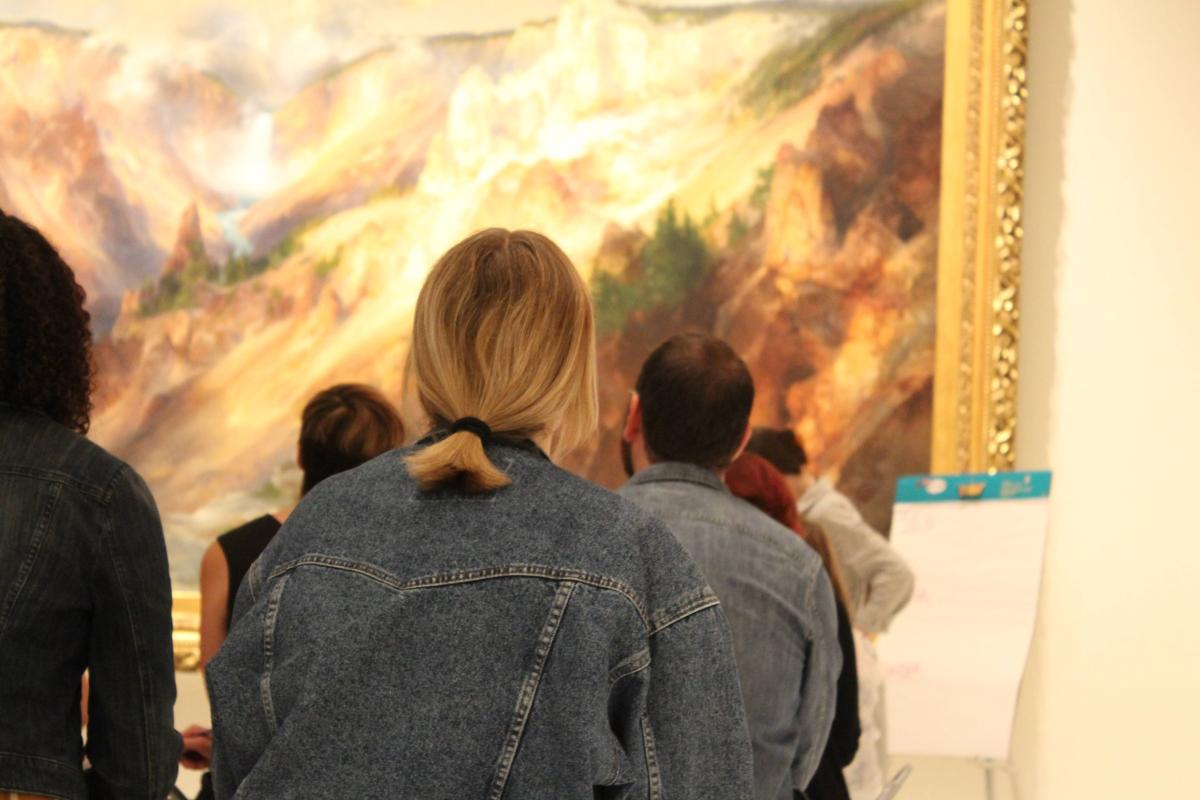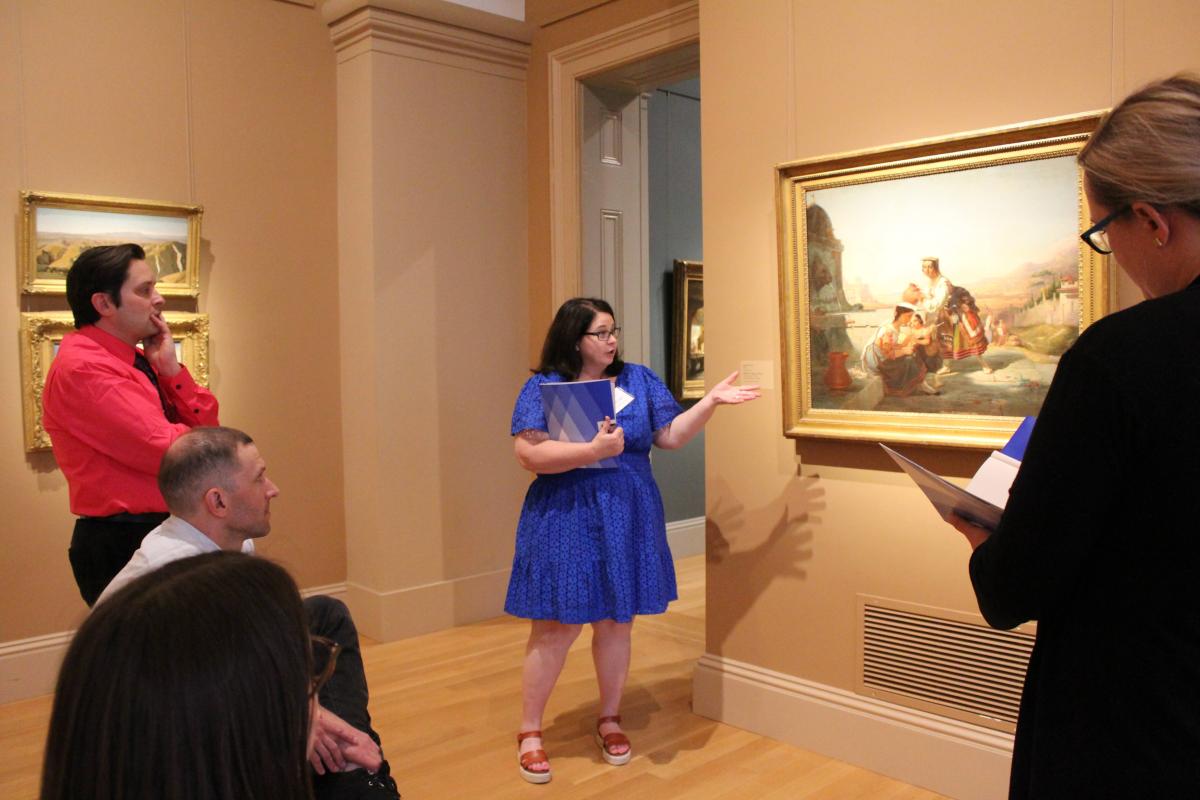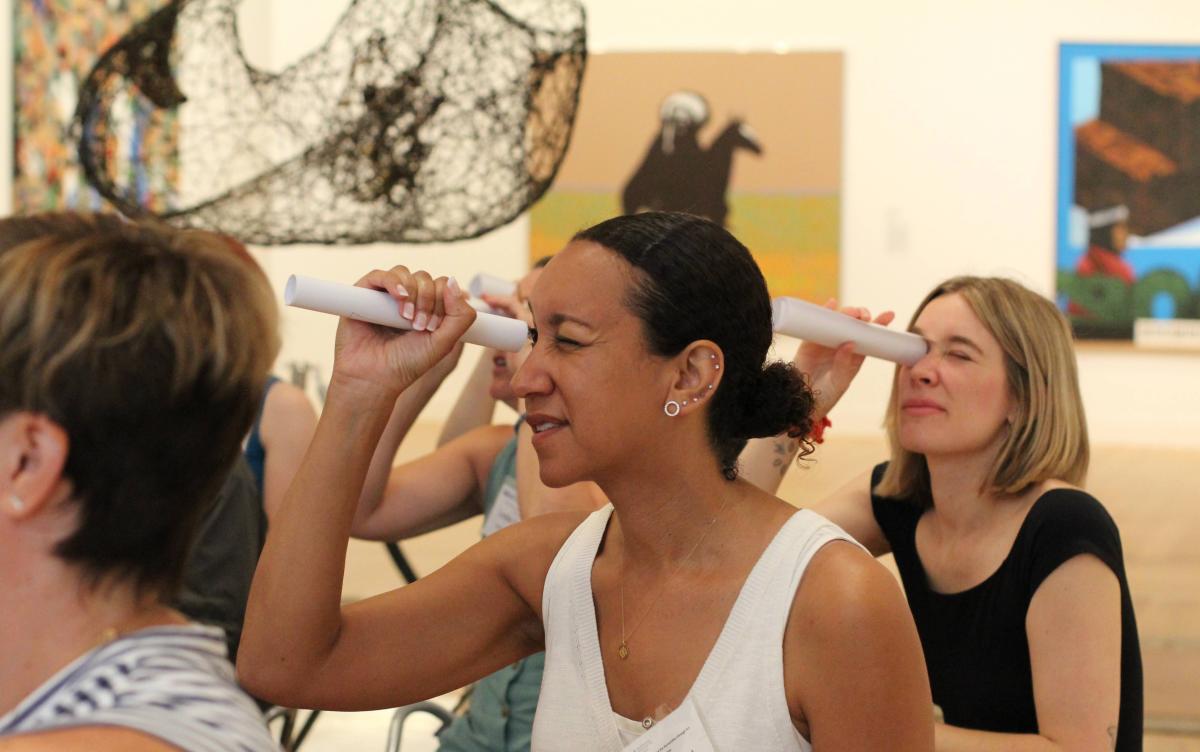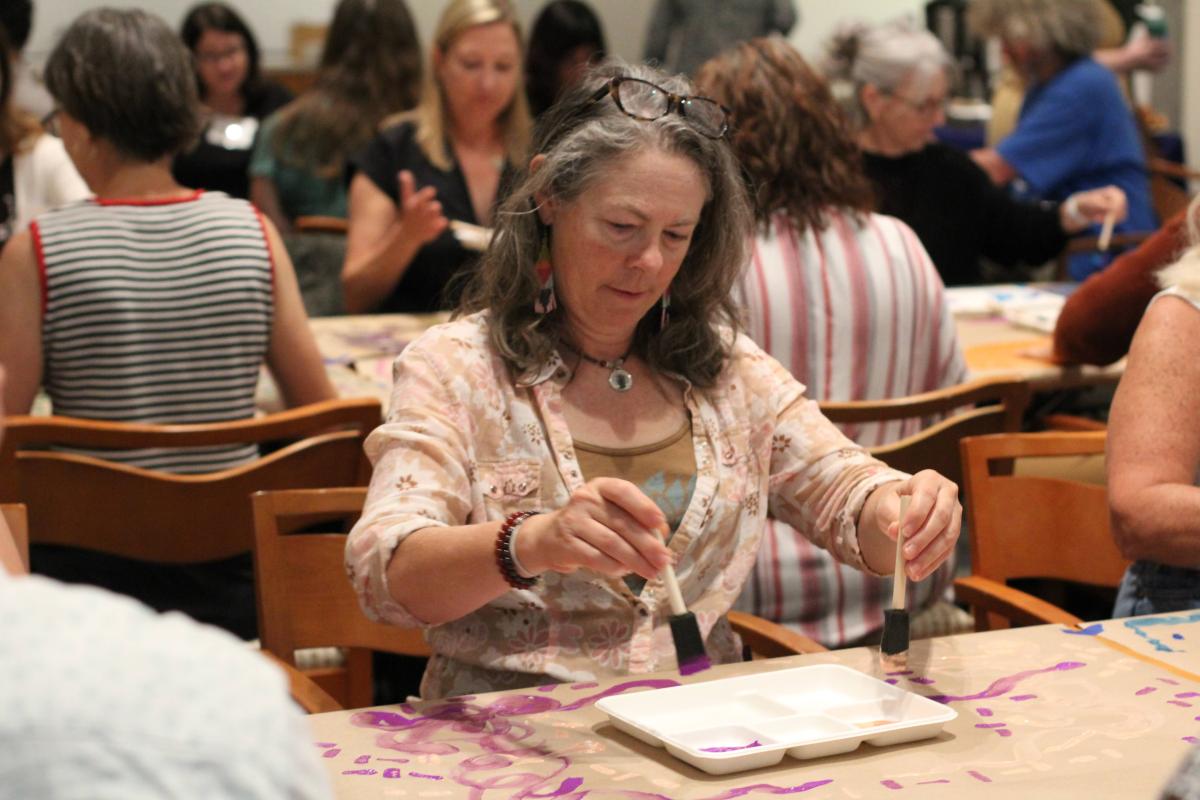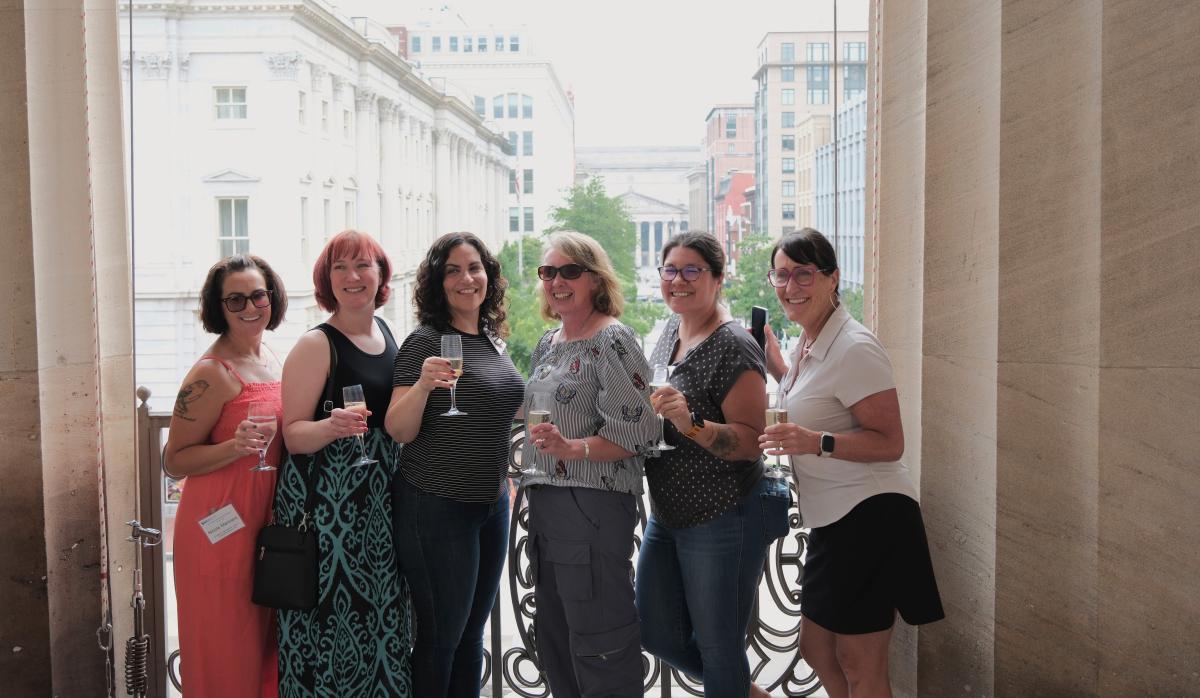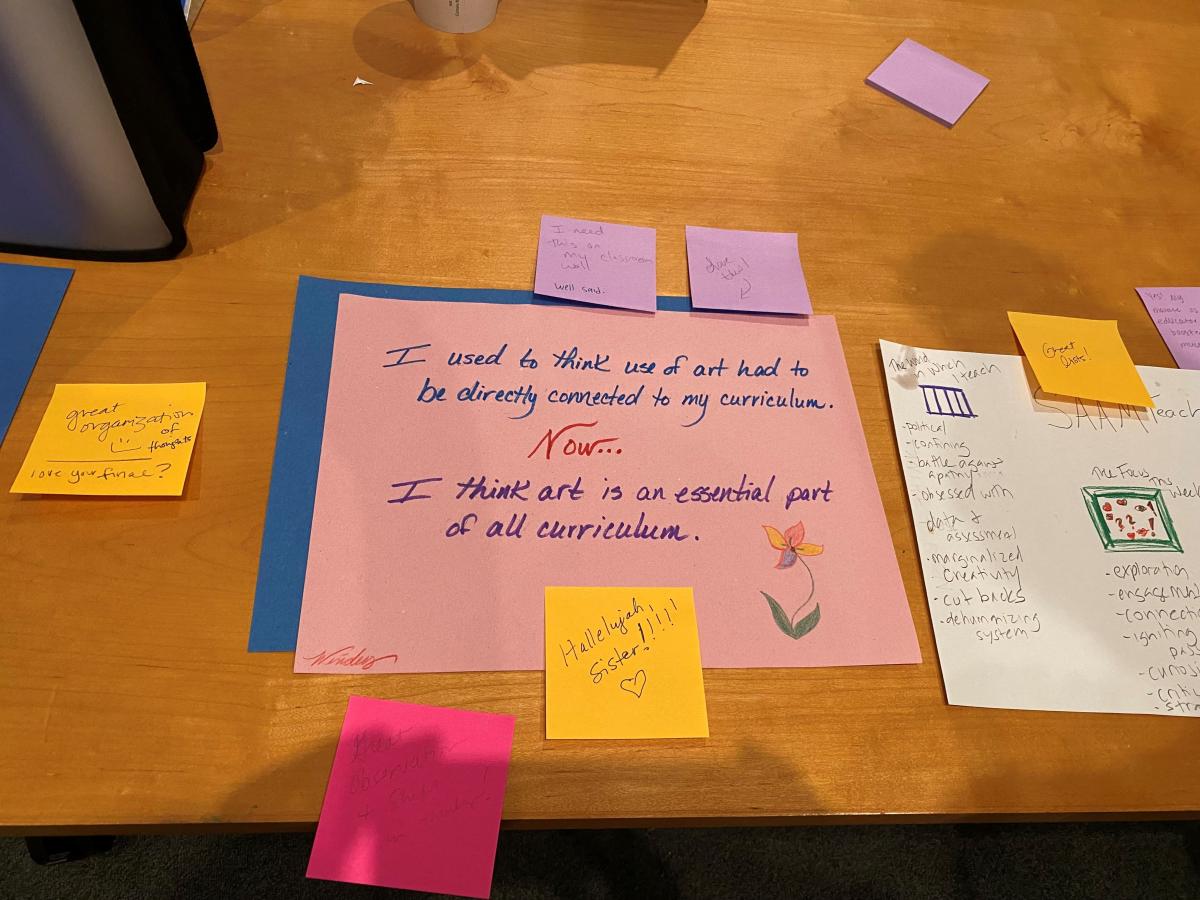
This is not an easy time to be a classroom teacher in the United States. Educators in all regions of the country and all types of schools are dealing with burnout, heightened politicization of their work, and the lingering effects of the pandemic on students’ learning and mental health. Teachers in rural parts of the country, where about one in five Americans live, face their own unique challenges. It requires great creativity and effort to seek out enriching opportunities to introduce their students to experiences and perspectives beyond their immediate environments and communities. This is where SAAM can help.
For the past 15 years, SAAM has hosted educators from across the country for our annual Summer Institutes: Teaching the Humanities through Art, two four-day intensive professional development learning sessions where participants explore strategies for using visual art as an interdisciplinary teaching tool in their classrooms. In the summer of 2024, the museum welcomed 55 educators; 25% of the participants represented rural communities across the U.S., from places as varied as the coast of Maine, the mountains of New Mexico, and the plains of Wyoming. Many were supported by SAAM’s dedicated scholarships to fund attendance by teachers from rural communities.
Engaging these teachers and inviting them to participate in the Summer Institutes with financial support has been a cornerstone of SAAM's Education Department’s Rural Engagement in Art, Culture and History initiative, called REACH. Established in 2021, the goal of the REACH initiative is to expand access to cultural programming and resources for students and teachers by assessing and supporting the needs of learners, building partnerships with rural schools, leading programs for rural learners, creating and distributing learning resources, and laying the foundation for continued relationships with rural constituents in these communities.
In their applications for the Institute, teachers from rural communities expressed pride in, and love for, their communities and students. They were also frank about the difficulties they encounter and their hopes for how engaging with SAAM can help them support their students.
A middle school social studies teacher from St. Clair, Missouri wrote that her school “faces the challenge of reaching students in poverty but has a group of committed teachers and community members determined to give the students the best education they can receive.” After attending the Summer Institute at SAAM, she hopes that “including more art will allow students to make more connections to [classroom] content, but also give more critical thinking skills.”
A high school English teacher from New Mexico wrote, "Our school district covers over 850 square miles with some students riding the bus over one hour each way as they commute in from surrounding areas. Because our school is rural, the school becomes a crucial part of their exposure to the world ... I have difficulty accessing real world opportunities for exposure to and engagement with a range of professionals and colleagues outside those that I work with.”
A middle school Special Education teacher from Indiana wrote:
“Bringing culture to [my students] through school lessons is critical to their ability to increase understanding and debunk stereotypes. I am committed to ensuring that creativity and artistic expression remains in our curriculum. It opens the world in so many ways to all students, and I have seen the power it can have on students with disabilities.”
Over four in-person Summer Institute days at SAAM, educators joined colleagues from places as varied as Brooklyn, New York, Duluth, Minnesota, San Juan, Puerto Rico, and Honolulu, Hawaii, as they learned to use visual art as a tool to think critically, make connections, learn content, and build empathy. Through interactive sessions with museum staff and guest instructors, they practiced inquiry-based strategies for analyzing art, used paintings to inspire collaborative poetry, paired art with literary texts and primary source documents, used movement and making to explore social and emotional learning, and got behind-the-scenes insight into the work of SAAM’s Interpretation and Conservation staff.
By the end of the week, each teacher had developed a unique arts-integrated lesson concept to implement in their classroom, as well as a resource collection for students and/or colleagues using the Smithsonian Learning Lab platform. They presented their lesson ideas virtually to their Institute learning cohort and SAAM staff two weeks following the program.
Jen Bennett, an English teacher from rural Rock River, Wyoming, is looking forward to applying her experience at SAAM with her students this year:
“I can honestly say for the first time in a few years, I'm coming into the school year feeling enthusiastic,” Bennett wrote. “The SAAM Institute made me feel like a student, and I've been reflecting on what it must feel like to be a student in my classroom. As a result, I'm trying to be more mindful of the student experience.”
Jennifer Wilhite, an English teacher from Friona, Texas, found a supportive community in the Institute cohort of teachers from across the country:
“The opportunity to meet with teachers from all areas of the US allows us to hear the trials, travails, and triumphs that remind us we are not alone, and our students are very much like those in other states!”
As the manager of SAAM’s Summer Institutes, this coming together of educators from diverse places and varied learning contexts to share ideas and experiences is my favorite part of the program. Teachers are doing difficult but impactful and essential work, and supporting them with resources, teaching tools, and an ongoing professional learning community is deeply rewarding.
Read more about the REACH program in this SAAM Story.














